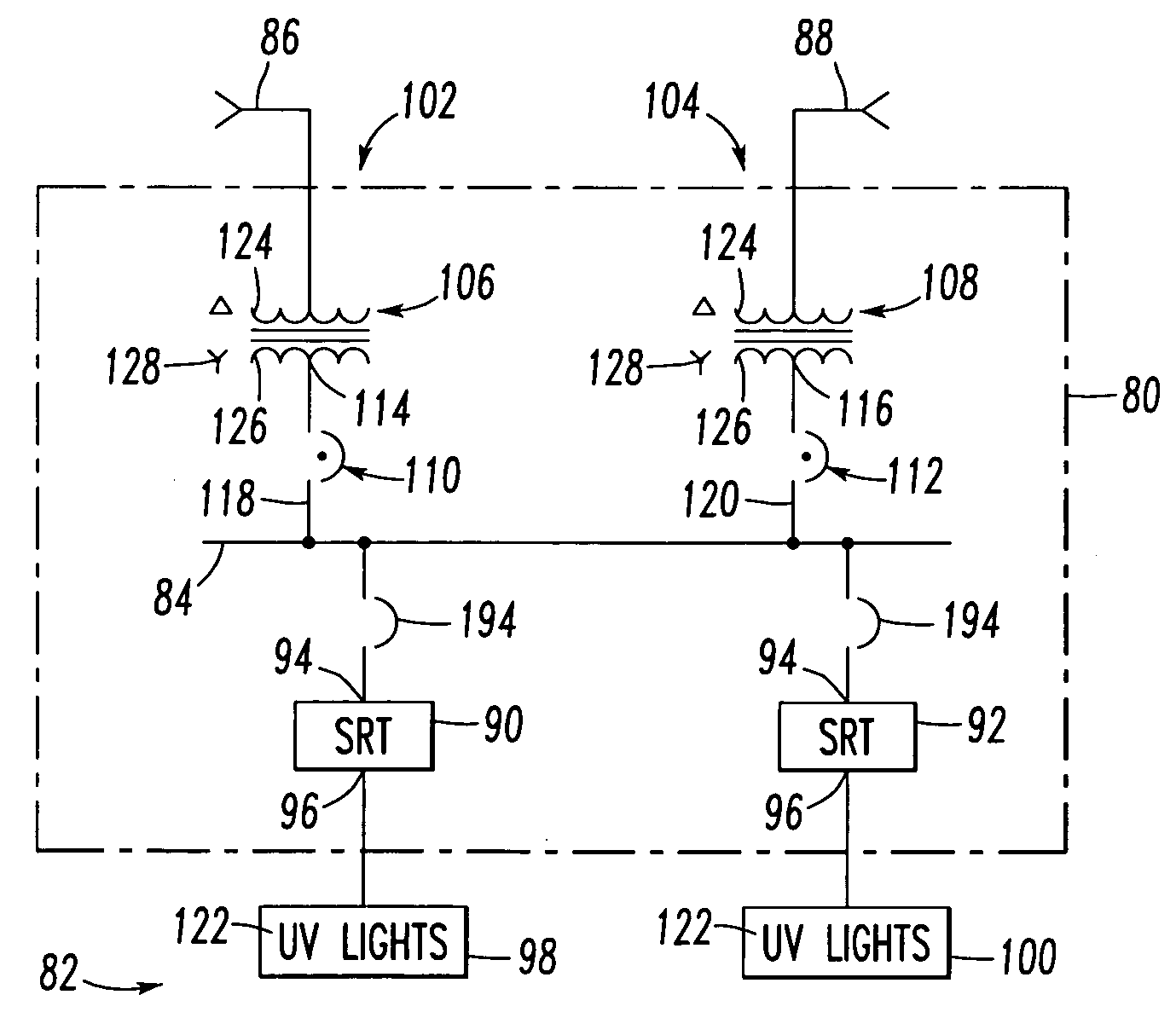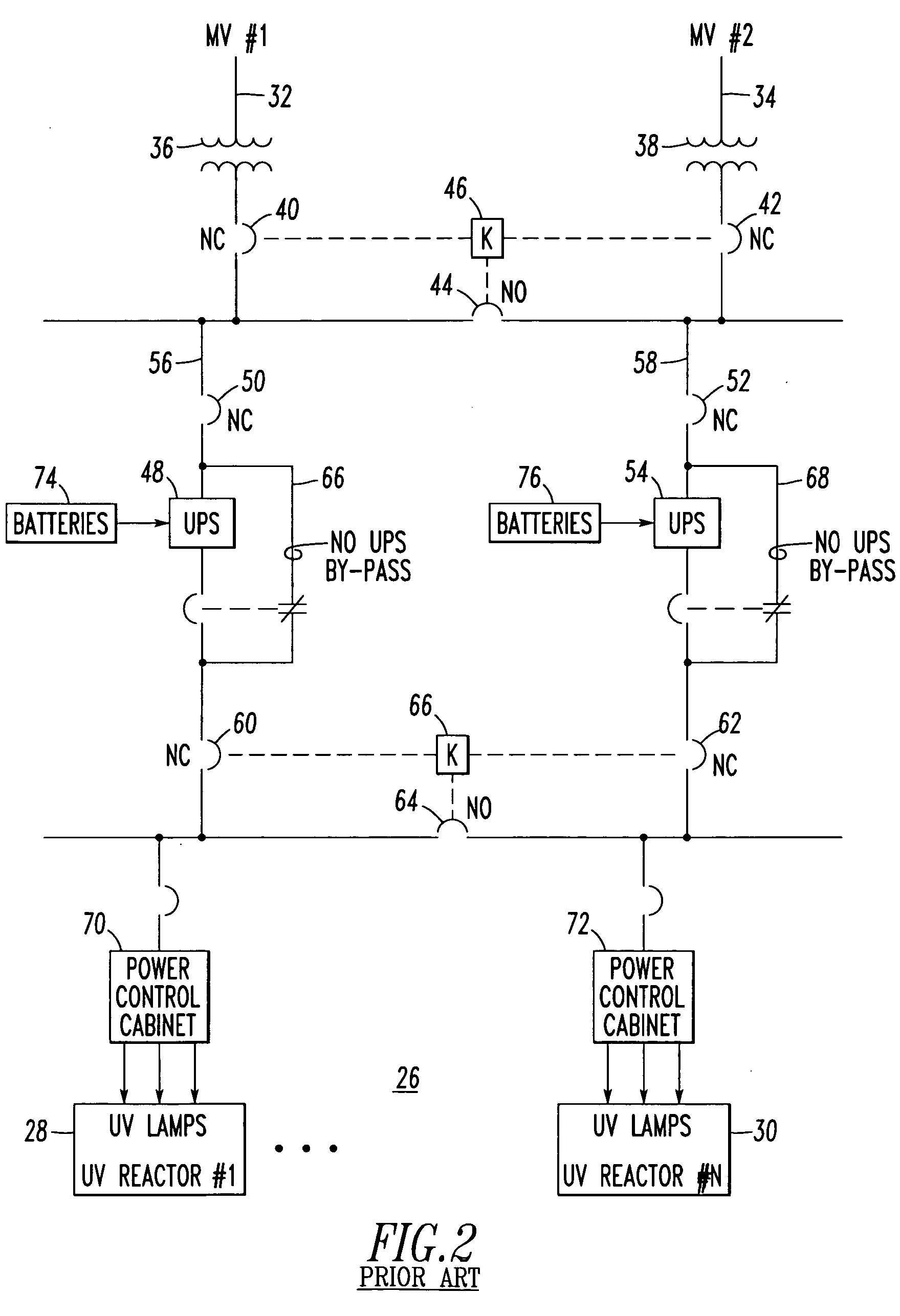Power system for ultraviolet lighting
a power system and ultraviolet light technology, applied in the field of power systems, can solve the problems of no known alternative electric lights that may be employed, severe abdominal cramps and diarrhea, and the ineffectiveness of the ozonation system and the membrane system,
- Summary
- Abstract
- Description
- Claims
- Application Information
AI Technical Summary
Benefits of technology
Problems solved by technology
Method used
Image
Examples
example 1
[0038] In this example, the spot network 84 powers two SRT devices 90,92, although three of more SRT devices may be employed. Also, the spot network 84 is powered from two feeder systems 102,104, although three or more feeder systems may be employed. Each of the example feeder systems 102,104 includes a network transformer, 106 or 108, and a network protector, 110 or 112. The first network transformer 106 is structured to be powered from the first MV feeder 86 and to output a first output 114. The second network transformer 108 is structured to be powered from the second MV feeder 88 and to output a second output 116. The first network protector 110 inputs the first output 114 of the first network transformer 106 and outputs a third output 118. The second network protector 112 inputs the second output 116 of the second network transformer 108 and outputs a fourth output 120. In turn, the spot network 84 is powered from the third and fourth outputs 118,120, and powers the example SRT...
example 2
[0039] The power sources, such as the example MV feeders 86,88, are MV power sources, and the first and second outputs 114,116 are low voltage outputs. In turn, the UV lights 98,100 are powered from a suitable low voltage (e.g., without limitation, less than about 1 kVAC; about 480 VAC (US); about 380 VAC (Europe); about 600 VAC (Canada); any suitable low voltage). The inputs to the UV lights 98,100 are transformed to a relatively higher voltage through a suitable type of ballast transformer / electronics (not shown) with the actual individual UV lamps 122 being powered at a relatively much higher voltage (e.g., a suitable voltage determined by the manufacturer of the UV lights 98,100).
example 3
[0040] As employed herein, the term “network” refers to a low voltage power system including a plurality of power sources wherein the design criterion is to maintain network power with a relatively very high reliability. For example, a typical network includes about four to about eight (not shown) interconnected transformer sources. Each transformer source includes a network protector, such as 110 or 112, which does not trip into the forward direction (in which power flows through the transformer to the network load), but which does trip relatively very quickly if reverse power flows from the network load to the transformer. A “spot network,” such as 84, is a relatively smaller network in which there are about two or about three or more transformers connected to a common bus. A typical application is a utility vault (not shown) on a floor of a high-rise building (not shown) or in a water treatment room (not shown). In contrast, a full network has its transformers remotely located fr...
PUM
 Login to View More
Login to View More Abstract
Description
Claims
Application Information
 Login to View More
Login to View More - R&D
- Intellectual Property
- Life Sciences
- Materials
- Tech Scout
- Unparalleled Data Quality
- Higher Quality Content
- 60% Fewer Hallucinations
Browse by: Latest US Patents, China's latest patents, Technical Efficacy Thesaurus, Application Domain, Technology Topic, Popular Technical Reports.
© 2025 PatSnap. All rights reserved.Legal|Privacy policy|Modern Slavery Act Transparency Statement|Sitemap|About US| Contact US: help@patsnap.com



